Abstract
Two teachers and a parent used three basic multiple baseline designs to investigate the effects of systematic reinforcement and punishment procedures in the classroom and at home. (1) A fifth-grade teacher concurrently measured the same behavior (tardiness) in three stimulus situations (after morning, noon, and afternoon recesses). Posting the names of pupils on a chart titled “Today's Patriots” was made contingent on being on time after the noon recess, then successively also the morning and afternoon recesses. Tardiness was reduced to near zero rates at the points where contingencies were applied. (2) A highschool teacher recorded the same behavior (daily French-quiz grades) of three students. She then successively applied the same consequences (staying after school for individual tutoring for D and F grades) for each student. At the points where the contingency was applied, D and F grades were eliminated. (3) A mother concurrently measured three different behaviors (clarinet practice, Campfire project work, reading) of her 10-yr-old daughter. She successively applied the same contingency (going to bed early) for less than 30 min spent engaged in one after another of the behaviors. Marked increases in the behaviors were observed at the points where the contingency was applied.
Full text
PDF
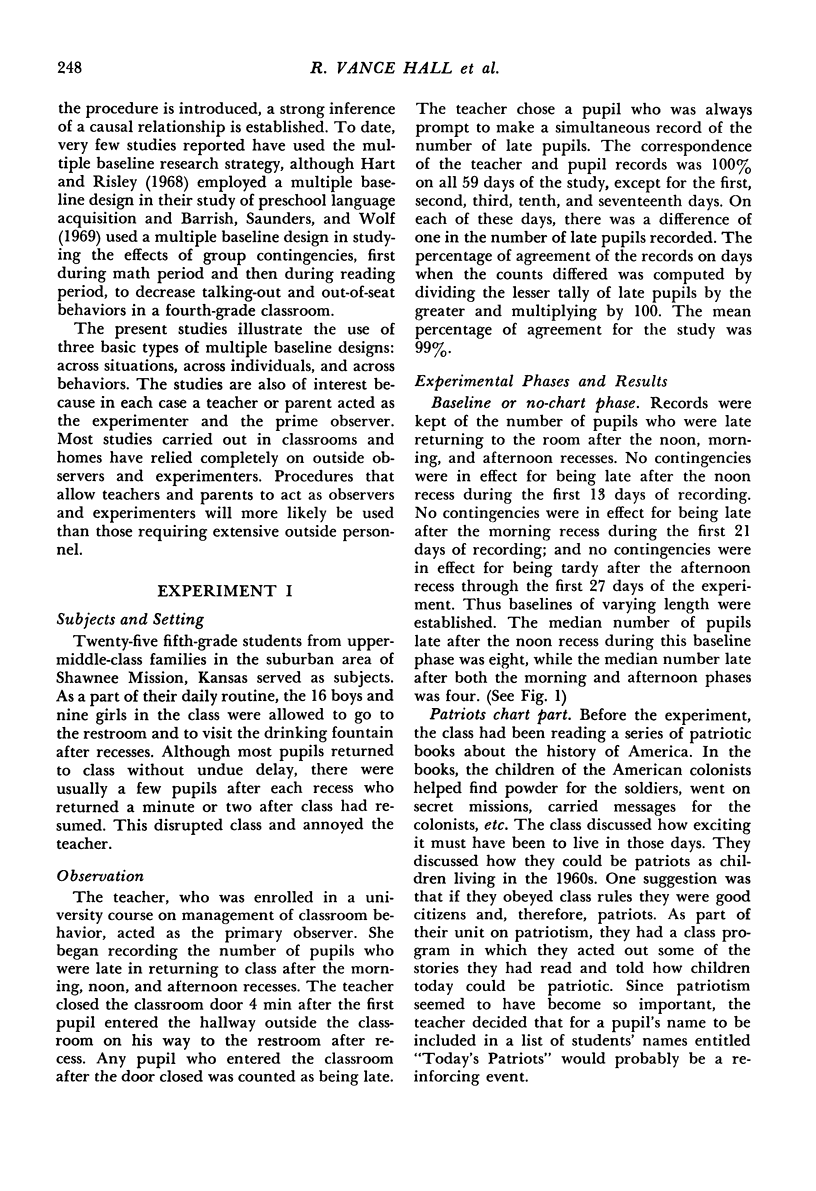
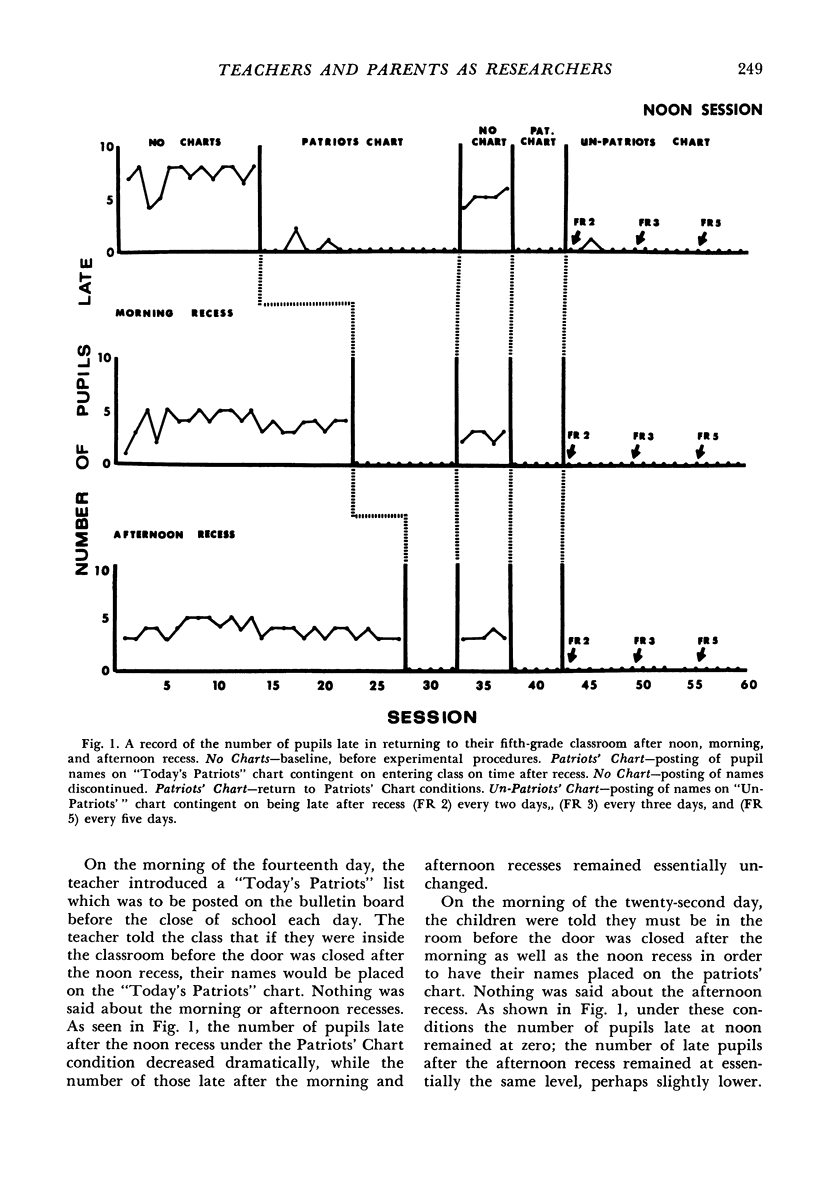
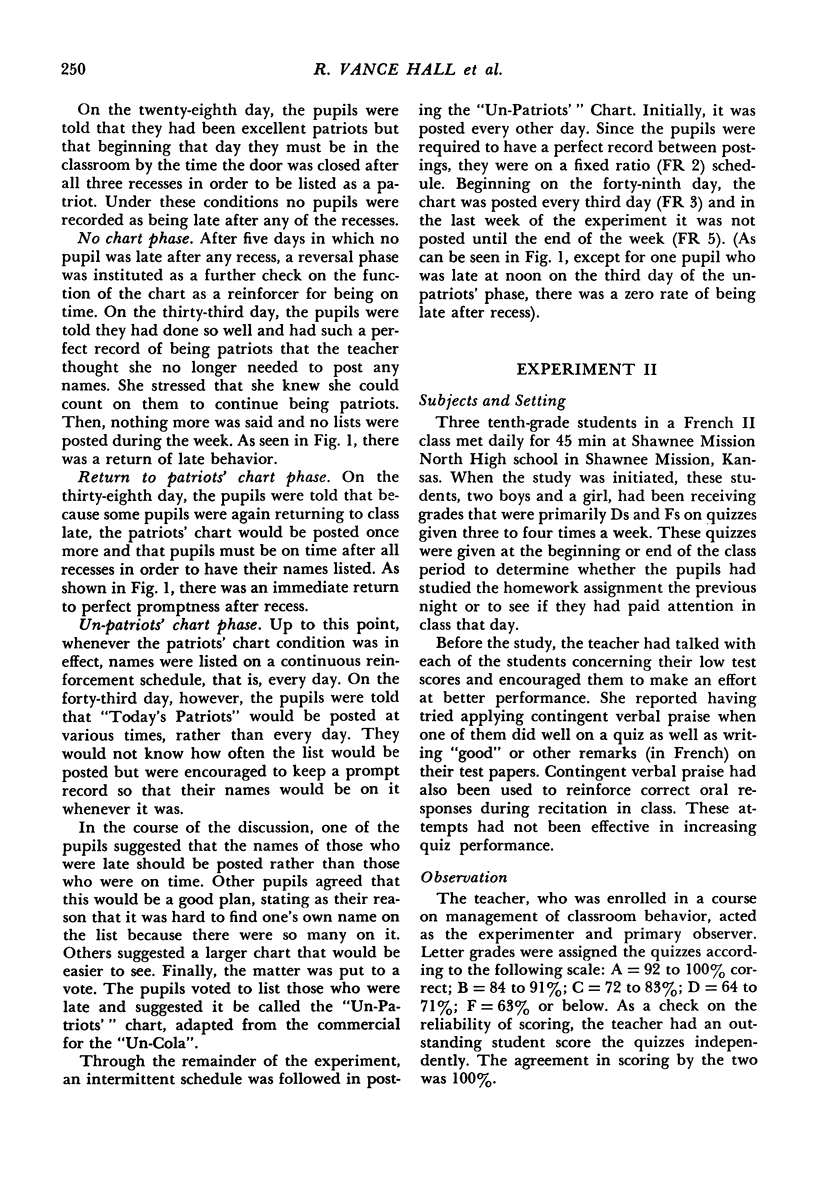
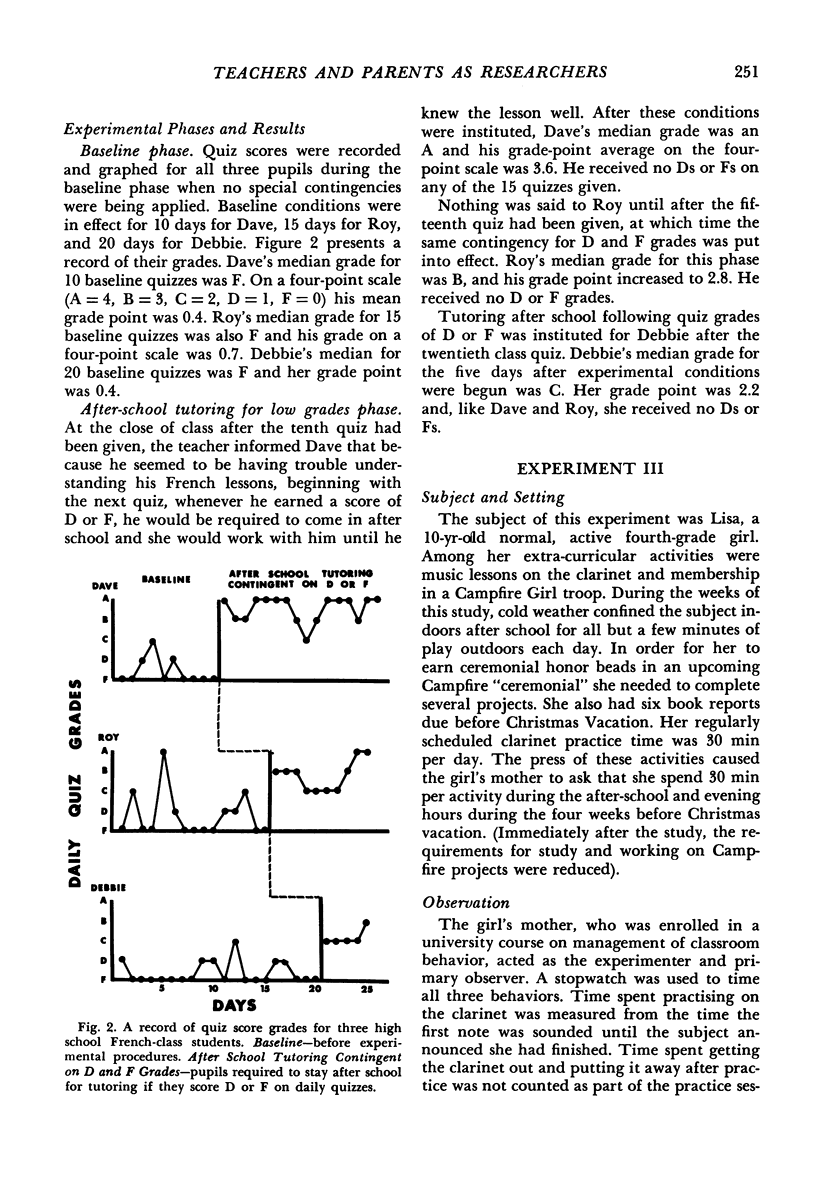
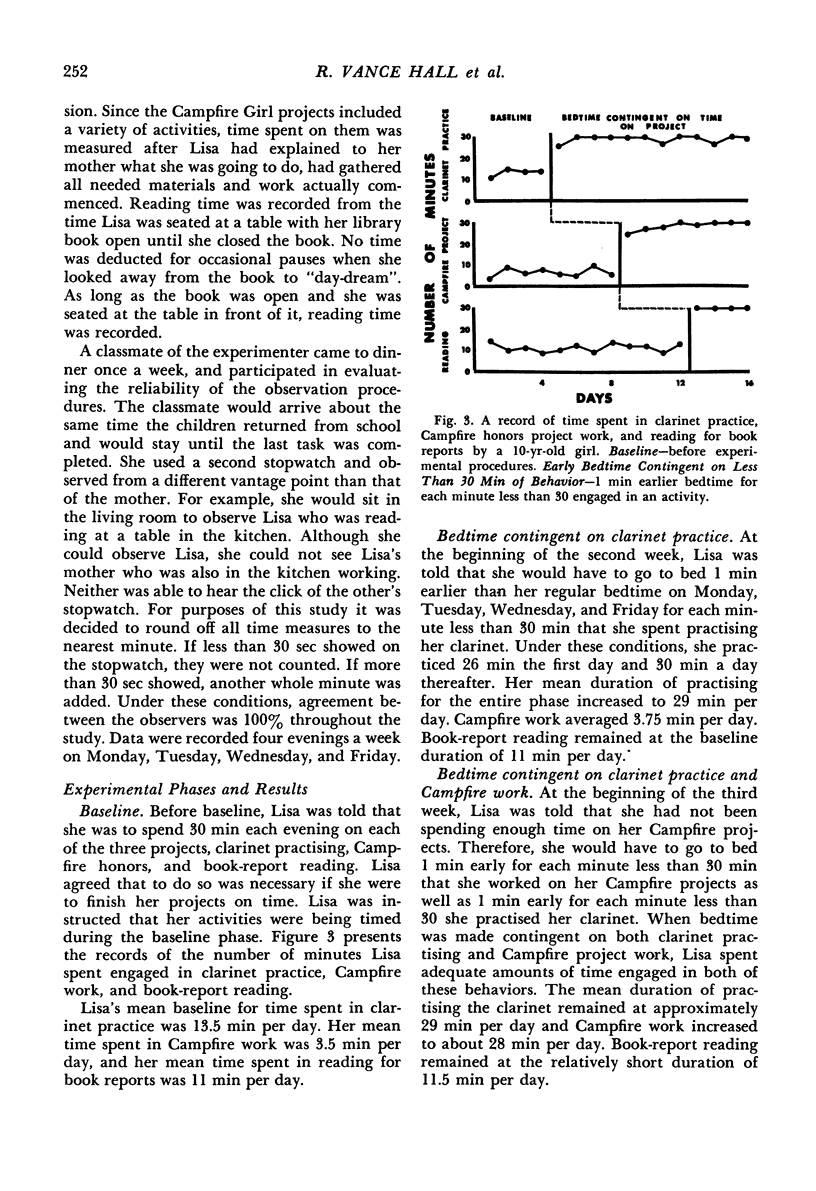
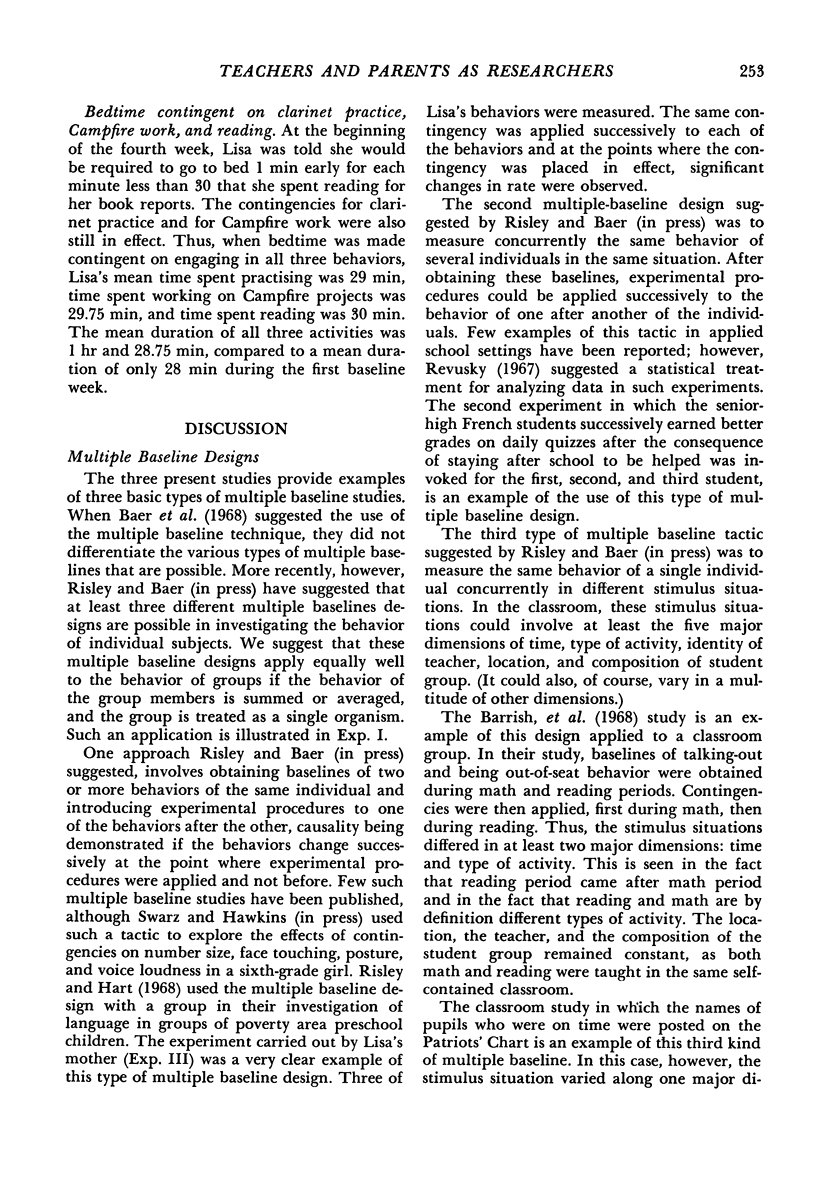
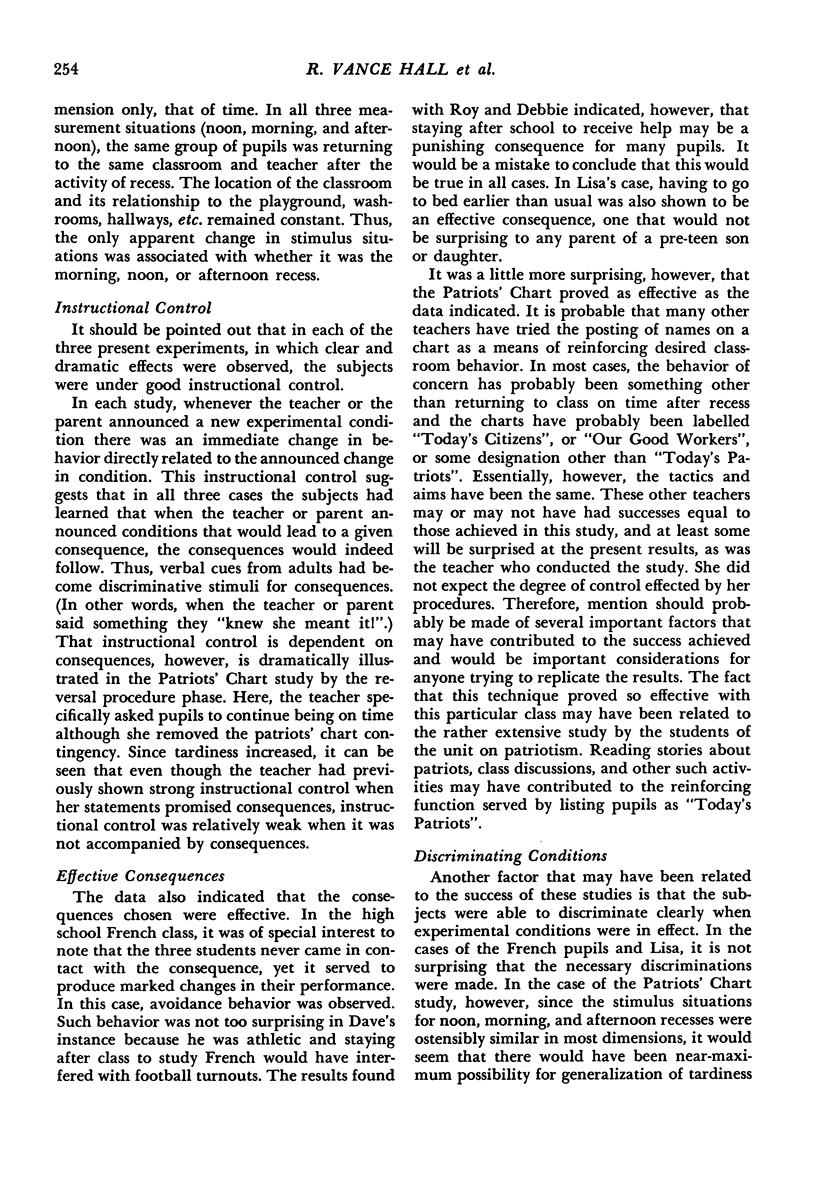

Selected References
These references are in PubMed. This may not be the complete list of references from this article.
- Baer D. M., Wolf M. M., Risley T. R. Some current dimensions of applied behavior analysis. J Appl Behav Anal. 1968 Spring;1(1):91–97. doi: 10.1901/jaba.1968.1-91. [DOI] [PMC free article] [PubMed] [Google Scholar]
- Barrish H. H., Saunders M., Wolf M. M. Good behavior game: effects of individual contingencies for group consequences on disruptive behavior in a classroom. J Appl Behav Anal. 1969 Summer;2(2):119–124. doi: 10.1901/jaba.1969.2-119. [DOI] [PMC free article] [PubMed] [Google Scholar]
- Clark M., Lachowicz J., Wolf M. A pilot basic education program for school dropouts incorporating a token reinforcement system. Behav Res Ther. 1968 May;6(2):183–188. doi: 10.1016/0005-7967(68)90005-3. [DOI] [PubMed] [Google Scholar]
- Hall R. V., Lund D., Jackson D. Effects of teacher attention on study behavior. J Appl Behav Anal. 1968 Spring;1(1):1–12. doi: 10.1901/jaba.1968.1-1. [DOI] [PMC free article] [PubMed] [Google Scholar]
- Hall R. V., Panyan M., Rabon D., Broden M. Instructing beginning teachers in reinforcement procedures which improve classroom control. J Appl Behav Anal. 1968 Winter;1(4):315–322. doi: 10.1901/jaba.1968.1-315. [DOI] [PMC free article] [PubMed] [Google Scholar]
- Hart B. M., Risley T. R. Establishing use of descriptive adjectives in the spontaneous speech of disadvantaged preschool children. J Appl Behav Anal. 1968 Summer;1(2):109–120. doi: 10.1901/jaba.1968.1-109. [DOI] [PMC free article] [PubMed] [Google Scholar]
- Madsen C. H., Becker W. C., Thomas D. R. Rules, praise, and ignoring: elements of elementary classroom control. J Appl Behav Anal. 1968 Summer;1(2):139–150. doi: 10.1901/jaba.1968.1-139. [DOI] [PMC free article] [PubMed] [Google Scholar]
- Revusky S. H. Some statistical treatments compatible with individual organism methodology. J Exp Anal Behav. 1967 May;10(3):319–330. doi: 10.1901/jeab.1967.10-319. [DOI] [PMC free article] [PubMed] [Google Scholar]
- Risley T. R., Hart B. Developing correspondence between the non-verbal and verbal behavior of preschool children. J Appl Behav Anal. 1968 Winter;1(4):267–281. doi: 10.1901/jaba.1968.1-267. [DOI] [PMC free article] [PubMed] [Google Scholar]
- Thomas D. R., Becker W. C., Armstrong M. Production and elimination of disruptive classroom behavior by systematically varying teacher's behavior. J Appl Behav Anal. 1968 Spring;1(1):35–45. doi: 10.1901/jaba.1968.1-35. [DOI] [PMC free article] [PubMed] [Google Scholar]
- Ward M. H., Baker B. L. Reinforcement therapy in the classroom. J Appl Behav Anal. 1968 Winter;1(4):323–328. doi: 10.1901/jaba.1968.1-323. [DOI] [PMC free article] [PubMed] [Google Scholar]
- Wolf M. M., Giles D. K., Hall R. V. Experiments with token reinforcement in a remedial classroom. Behav Res Ther. 1968 Feb;6(1):51–64. doi: 10.1016/0005-7967(68)90042-9. [DOI] [PubMed] [Google Scholar]


